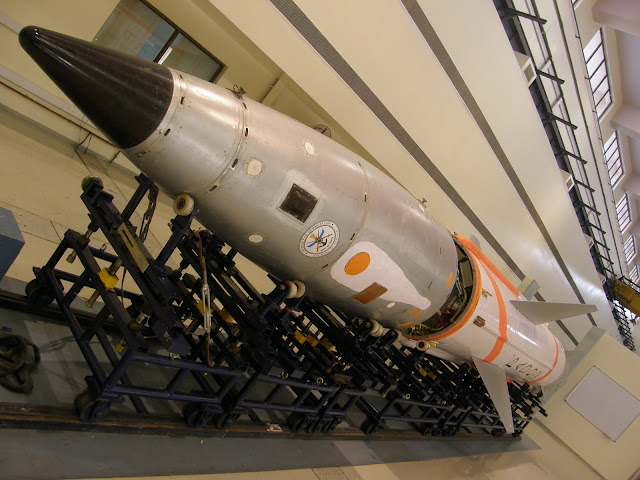The two-tiered BMD System consists of the PAD, which will intercept missiles at exo-atmospheric altitudes of 50–80 km (31–50 mi) and the AAD missile for interception at endo-atmospheric altitudes of up to 30 km (19 mi). The deployed system would consist of many launch vehicles, radars, Launch Control Centres (LCC) and the Mission Control Centre (MCC). All these are geographically distributed and connected by a secure communication network.
The Prithvi Air Defence (PAD) is an anti-ballistic missile developed to intercept incoming ballistic missiles outside the atmosphere (exo-atmospheric). Based on the Prithvi missile, PAD is a two-stage missile with a maximum interception altitude of 80 km (50 mi). The first stage is a Solid fuelled motor while the second stage is Liquid fuelled.It has manoeuvre thrusters which can generate a lateral acceleration of more than 5 gs at 50 km (31 mi) altitude. Guidance is provided by an intertial navigation system with mid-course updates from LRTR and active radar homing in the terminal phase. PAD has capability to engage the 300 to 2,000 km (190 to 1,240 mi) class of ballistic missiles at a speed of Mach 5. LRTR is the target acquisition and fire control radar for the PAD missile. It is an active phased array radar having capability to track 200 targets at a range of 600 km (370 mi). The PAD missile has also been called Pradyumna.
 |
| AAD test launch |
Further development led to the improvement of the interception range from 50 to 80 km (31 to 50 mi). The improved missile will utilise a gimbaled directional warhead, a technology also used by Israel, the US and Russia. This technology allows for a smaller warhead to destroy the target missile
Two new anti ballistic missiles that can intercept IRBMs are being developed. These high speed missiles (AD-1 and AD-2) are being developed to intercept ballistic missiles with a range of around 5,000 km (3,100 mi). The test trials of these two systems are expected to take place in 2011. The new missile will be similar to the THAAD missile deployed by the US. These missiles will travel at hypersonic speeds and will require radars with scan capability of over 1,500 km (930 mi) to successfully intercept the target




No comments:
Post a Comment
PLEASE TELL YOUR VIEWS ABOUT THE ARTICLE